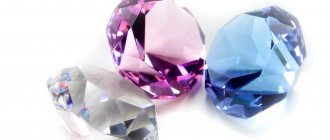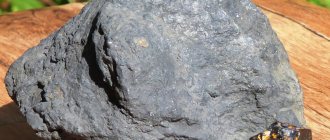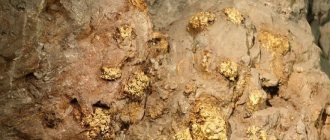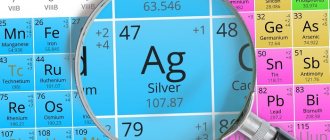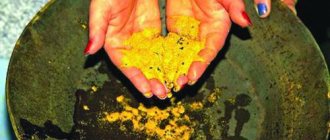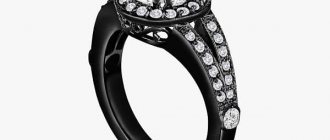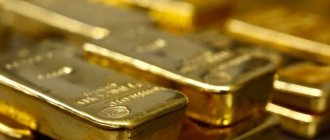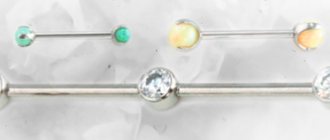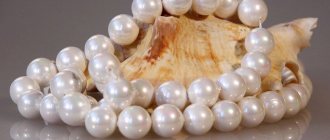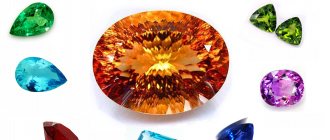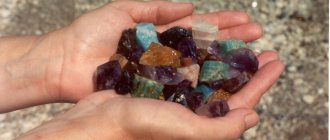Creating stones in the laboratory - fake or not
Diamonds created artificially from synthetic materials are incorrectly called copies. This is due to the fact that identical materials are used for their manufacture, but they are obtained in different ways. A real diamond and a fake differ in that in the first case the mineral is born in nature, and in the second it comes from human hands.
Artificial stones have all the properties of real diamonds:
- high strength;
- ability to conduct heat;
- identical resistance indicators;
- pronounced shine;
- characteristic structure;
- same refractive index.
The only difference between a fake diamond is that it does not have any defects. Due to this feature, they are used both in jewelry production and in industry. According to statistics, no more than 20% of natural stones are suitable for use in jewelry. The remaining 80% have cracks, inclusions, and cloudiness. If you use high-quality materials when creating synthetic stones, it is very difficult to distinguish a natural stone from a fake, even with modern equipment.
Methods for identifying imitation diamonds or polished diamonds
In the table at the link you can see the main materials used as analogues of diamonds or rough diamonds.
All methods are based on comparing the values of the properties of the material under study with the values inherent in genuine diamonds.
- Thermal conductivity. Diamond has a unique thermal conductivity value, similar to the thermal conductivity of metals (theoretically, it is even higher than that of most metals). Diagnostics by thermal conductivity allows you to distinguish a diamond from all imitations, except moissanite. The work of diamond detectors, the most popular type of device for identifying diamonds, is based on determining thermal conductivity parameters. Some models also measure electrical conductivity, which allows you to determine moissanite. These devices are relatively inexpensive and are available to every jeweler and expert.
- Point method (for a classic brilliant cut with good proportions and symmetry). Based on the total internal reflection of light in a diamond. A stone is placed on a point drawn on paper with the platform facing down and viewed from the side of the pavilion. For an imitation with a refractive index significantly lower than 2.42, the point is visible through the edges of the pavilion. For diamond and imitations whose refractive index is higher than 2.42 (moissanite, strontium titanate, rutile), the point through the pavilion faces is not visible. The disadvantage of this method is that some types of cuts and certain cutting angles do not allow achieving the effect of total internal reflection.
- Specific gravity . The specific gravity of the stone is determined by hydrostatic weighing (dividing the weight of the stone in grams by the volume of water it displaces in cubic centimeters). The resulting value should be close to 3.52.
- Reflectivity (determined using a dotester). The value of the reflection index of a diamond (diamond) is close to the value of the reflectance index of moissanite, so in most cases it is not possible to distinguish a diamond (diamond) from moissanite using this method.
- Electrical conductivity (determined using a moissanite tester). Moissanite is a semiconductor, so measuring electrical conductivity can distinguish it from diamond* and other stones in approximately 95% of cases. * Diamond is not a semiconductor; The exception is boron-containing blue diamonds, in which case the use of a moissanite tester may give an incorrect result.
- Luminescence (is an indirect method of differentiation). In long-wave ultraviolet rays, diamonds in a product typically glow blue with varying intensities, but yellow, green, pink and other colors may also appear with varying intensities. Imitations almost always luminesce in one color.
- Hardness _ Diamond is the hardest mineral and therefore scratches all imitations. To determine hardness, special hardness pencils are used, graded according to the Mohs scale.
- The nature of inclusions . If inclusions are present, a diamond can be recognized by them, as well as synthetic analogs and imitations can be distinguished from each other. Diamond is characterized by inclusions of pyrope, olivine, chrome diopside, and sulfides, which can be identified by appearance, size, shape, color, transparency, and relief. Characteristic “diamond in diamond” inclusions are often found.
- Surface examination (is an indirect method). A diamond's edges are always smooth, the edges and points of convergence of the facets are sharp, and do not wear out over time.
- Variance . Stones with different amounts of dispersion “play” differently: the greater the dispersion, the more the stone plays (for example, leucosapphire has no play, but moissanite has an unusually bright play).
- Optical isotropy . Using a polariscope, you can clearly distinguish all optically anisotropic imitations from diamond. A distinctive feature of anisotropic stones is the “bifurcation of the ribs” effect when viewing the stone through the platform, often visible at 10x magnification (for example, with moissanite or zircon).
- A characteristic pattern of anomalous birefringence . Many cubic crystals (including diamond) exhibit anomalous birefringence in crossed polarization filters. In this case, dark spots or a characteristic dark lattice are observed for the sample being diagnosed.
- Refractive index . If it is possible to measure the refractive index (greater than 1.81), most simulations can be unambiguously identified. However, synthetic diamond has the same refractive index as natural diamond.
Some colorless materials (leucosapphire, quartz, topaz, beryl, phenacite, spinel, glass, doublets, etc.) can be recognized using conventional gemological instruments - polariscope, refractometer, spectroscope, etc.
When preparing this article, information was used from the website of the Gemological Center of Moscow State University: https://www.gem-center.ru/
ALL STONES - CATALOG | DIAMONDS (DIAMONDS) - CATALOG
The most expensive diamond | Chemical composition of diamond | Diamond crystal structure | Diamond size and weight | Physical properties of diamonds | What color is the diamond? | Black diamonds - natural and refined | The largest diamond in the world. Diamonds from the Cullinan diamond
Share this article with your friends
Works by designers from the JEWELIRUM catalog
- Co.Cos Jewelry
- Co.Cos Jewelry
- Taiga Jewelry, Tomsk
- Taiga Jewelry, Tomsk
- Ilya Maksimov, Crimea
- Ilya Maksimov, Crimea
- UBIRING
- UBIRING
- Diamonds are Forever
- Diamonds are Forever
- Rings in natural style, Sergacheva Jewelery
- Earrings with pearls, Sergacheva Jewelery
- Cabochon ring, Minty Sky
- Fly earrings, Minty Sky
- Ring, Precious Park
- Ring, Precious Park
- Snake skin ring, Stoyanova Jewelery
- Chain earrings, Stoyanova Jewelery
- Children's pendant - stick, Matthew&Daniel
- Pendant for a child, Matthew&Daniel
- Bracelet, Svetlana Subbotina
- Ring with Slavic symbols, Svetlana Subbotina
- Indian style ring, Anna Goffman
- Indian style ring, Anna Goffman
- Earrings, ISTA
- Geometric ring, ISTA
- Earrings with enamel, PNJewelry
- Ring with enamel, PNJewelry
- Ring, Khramtsova Jewelry
- Ring, Khramtsova Jewelry
- Wedding rings to order, obruchalki.com
- Wedding rings to order, obruchalki.com
- Earrings, Yuri Bylkov
- Earrings, Yuri Bylkov
- Titanium bracelets, LanaMuransky
- Titanium pendant, LanaMuransky
- Brooch Elephant (after Salvador Dali), THING
- Ring Veil, THING
- Mace earrings, VLADIMIR MARKIN
- Cufflinks, jewelry mechanics, VLADIMIR MARKIN
- Drop-shaped ring, EKATERINA TOLSTAYA
- Drop-shaped earrings, EKATERINA TOLSTAYA
- Necklace with amber, LETA
- Earrings with amber, LETA
- Children's earrings, combinable, FASHBY
- Children's earrings, combinable, FASHBY
- Ring of architectural form, Elizaveta Malafeevskaya MANU_L
- Architectural bracelet, Elizaveta Malafeevskaya MANU_L
- Set Ginkgo Leaf, SHABUT JEWELLERY
- Brooch Wearable porcelain, SHABUT JEWELLERY
- Architectural ring, GEOMETRY
- Brooch, porcelain, GEOMETRY
- Necklace made of polymer clay, LICORNE ART
- Brooch made of polymer clay, LICORNE ART
- Ring, avant-garde, VALERY SEREDIN
- Bracelet, avant-garde. VALERY SEREDIN
- Wooden set, Scandinavian/Japanese minimalism, VLADIMIR SHESTAKOV
- Ring, Scandinavian/Japanese minimalism, VLADIMIR SHESTAKOV
- Earrings, TON ANT
- Ring, TON ANT
- Architectural ring, ANCHOR
- Architectural necklace, ANCHOR
- Earrings, GOHFELD JEWELLERY
- Necklace, GOHFELD JEWELLERY
- Massive ring, YAKISCHIK
- Designer jewelry, YAKISCHIK
- Architectural ring, ONE DAY ART
- Architectural ring, ONE DAY ART
- Brooch, bionics, VALERIYA MARKOVA (TESSA)
- Unclosed ring, bionics, VALERIYA MARKOVA (TESSA)
- Ring, bionics, BEAVERS
- Earrings, bionics, BEAVERS
- Earrings, asymmetry, VAGANOVA JEWELRY
- Airplane ring, VAGANOVA JEWELRY
- Flower ring, ALCHEMIA JEWELLERY
- Set, ALCHEMIA JEWELLERY
- Pendant-cat, ethnic, STUDIO OF ILYA AND VERA PALKIN
- Earrings, STUDIO OF ILYA AND VERA PALKIN
Difference between scientific and popular names
Many scientists have worked in the field of imitation diamonds. “Made in the USSR” - this marking can be seen on precious jewelry with “diamonds” from the times of the Soviet Union. In the area where they are actively involved in the “growing” of synthetic stones, they are named according to production technology.
If the creation involves high pressure and temperature, then the abbreviation HPHT is used, and the CDV marking indicates that the chemical vapor deposition technique was used. An imitation diamond does not always act as its full copy. In common people they are better known as cubic zirconia, moissanite, rhinestone, ferroelectric, rutile, fabulite. However, the most popular is zirconium dioxide, which has no similarities with a real diamond.
Out of ignorance, most people call all fake stones cubic zirconia. Naturally, such a definition cannot be considered correct. However, it does an excellent job of simulating diamond, since it glitters in the sun and shimmers with colors, which is due to its high refractive power. Due to this, cubic zirconia is often used in jewelry.
Imitation artificial diamond
Artificial diamond moissanite
High demand for beautiful jewelry with sparkling, iridescent stones naturally led to the emergence of various imitations of diamond.
Sometimes, instead of this precious stone, a transparent variety of quartz was used in jewelry - rock crystal, white sapphire.
But with the development of technology, artificial diamonds appeared, which were not much different from a real stone.
A diamond substitute obtained in a laboratory contains, in addition to carbon atoms, nitrogen in its crystal lattice, inclusions of which appear there during the growth stage.
Due to the fact that nitrogen suppresses the blue spectrum, artificial stone takes on a yellow tint.
Now there are the following varieties:
- Back in the seventies of the twentieth century, cubic zirconia appeared in the jewelry industry. This diamond imitation was cubic stabilized zircon. In terms of its optical properties, it is very similar to the natural sample, but is significantly inferior to it in strength.
- Another option for imitation diamond is Nexus. When it is produced, carbon combines with various impurities. The sample is distinguished by high strength and hardness.
- Made from silicon carbide, moissanite is the most expensive artificial diamond. It has extraordinary shine and excellent strength.
Products using imitation diamonds are always in high demand.
However, even when choosing jewelry that uses artificially grown stone, you need to be careful.
Unscrupulous sellers may sell ordinary glass that has been cut.
The history of artificial diamonds
After natural diamonds were discovered in nature, a hypothesis was established that they cannot be grown under artificial conditions. Around 1797, after it was established that the stone was composed of carbon, scientists began to speculate about the possibility of “growing” them in the laboratory.
The first attempts to implement the idea occurred in 1926, but they were unsuccessful. The sample that scientists received bore little resemblance to the real stone. However, this experience is considered a starting point for further testing and research. In 1941, General Electrics noticed this.
Initially, it was assumed that the technology would involve heating carbon to 3000 degrees Celsius under a pressure of 5 GPa. It was not possible to develop it to the end, since the Second World War began. It took scientists, researchers and company employees 10 years before they could return to this work again.
A good quality stone (imitation diamond) was obtained only in 1953. It could already be used in mass production. The only drawback was their excessively small size, which did not allow them to be introduced into jewelry production, so the diamonds went into industry.
A relative solution to the problem occurred in 1970, but the maximum size of a synthetic stone was within its weight of 1 carat. In modern laboratories everything is different. The world's largest diamond created under artificial conditions is registered in the Guinness Book of Records. Its weight is 34 carats.
How to make an artificial diamond
Production of artificial diamond
Now the production of artificial diamond is debugged and worked out to the smallest detail.
To obtain a synthetic diamond, two main methods are used:
- a method in which the source material is exposed to very high pressure and very high temperature;
- a method based on chemical deposition of components using gas.
When using the first technology (HTHP), artificial diamonds are produced by exposing a diamond blank (graphite powder/crumbs) inside a special chamber, where very high pressure is created and very hot air is supplied.
Such conditions are considered most similar to those in which a real mineral is formed in nature.
But science has significantly accelerated this process, and you can get the finished product in a week or ten days.
Using high temperature and pressure, you can bring the resemblance of a natural and artificial diamond as close as possible.
Another method (CVD), which began to be used to produce artificial diamonds, differs in that the entire process occurs at a lower level of pressure and in a shorter time.
The starting material is immersed in a special chamber where vacuum conditions are created. Then the exposure to microwave rays and gases begins.
Carbon plasma heats up to 3000 degrees. Synthetic diamonds are formed by deposition of carbon molecules onto a blank plate.
Substances rich in carbon are used as raw materials. It can be graphite, sugar coal, soot.
Artificially grown stones have the same structure as natural ones. And this explains their hardness and high strength.
What colors are fake stones?
Natural diamond imitation is a complex and lengthy process. Therefore, today counterfeits are obtained in special laboratories. Many consumers are interested in how wide the color range of synthetic stones is. Unfortunately, the choice is so small that it is limited only to blue and yellow shades.
Along with this, transparent “diamonds” have always been more popular, but their creation requires a lot of time and effort. The process of obtaining colorless stones is complicated by the fact that scientists must constantly monitor the process and prevent boron or nitrogen from entering the composition.
To obtain artificial blue diamonds, bromine is used (it is added at a certain stage of production). The shade can vary from a thick, rich tone to a light, barely perceptible shine. Yellow stones are “grown” with the addition of nitrogen. Sometimes they also make black diamonds. In this case, nickel is used.
In what areas are artificial diamonds used?
Approximately 80% of all fake stones are used in various industries. In particular, they are used for the manufacture of bearings and drill tips. If the sample is small, it will be useful for processing into crumbs or dust. Subsequently, it will be used to process the surface of knives, as well as grinding tools.
The diamond imitation process plays a special role in the production of electronics. This material is subsequently used to make needles, some parts of microcircuits, and layers in chips. Thanks to this, it is possible to maintain thermal fluidity and resistance level. Diamonds created using CVD technology are used to make parts for mobile phones. They are actively used to create medical laser beams. These are just some of the sales areas where high-quality fake stones can be sold.
Application of artificial diamond
Diamond coating
In its appearance, an artificial diamond is no different from a real natural mineral. However, its cost is significantly less.
Such stones, obtained in a laboratory, are better suited for cutting. Jewelers can cut even very small synthetic crystals. Such small samples are in great demand, because natural small crystals are very difficult to extract from the rock.
The high levels of hardness and strength that characterize artificially grown diamonds make them indispensable for use in creating various devices for cutting or grinding.
Diamond coating and chips are present today on saws, drills, drills and many other tools. Now such material is actively used in the production of microcircuits.
The production of synthetic diamonds by the gas method (CVD) is very important, since the resulting material is used to create high-tech medical equipment.
The use of such components allows you to extend the service life of devices, since diamond parts can withstand high heat, maintaining efficiency and performance.
Receiving technologies
Since it is known that diamonds can be “grown” in laboratory conditions, it is worth understanding how this happens. In modern factories, only two technologies are practiced. The HPHT technique was the first to appear, and it remains the most popular today. The process occurs by heating carbon under pressure to critically high temperatures. The main advantage is the low cost of counterfeit diamonds.
The next technology is CVD. To understand the process more simply, it is necessary to imagine a chamber filled with carbon gas. Subsequently, it will be deposited on a silicon wafer by heating or using microwave rays. The result of all actions is to obtain a plate up to 3 mm thick. That is why such diamonds are often used in electronics and optics.
There are laboratories that specialize in growing synthetic diamonds, using “explosive” technology that helps produce diamond chips. The specificity of the process is that during an explosion, increased pressure is created and a lot of heat is also released. If you do not immerse the camera in water in time, the stones will overheat and turn into graphite.
The technology is not perfect, since that very precious crumb is inside the graphite. To obtain it, you will have to go through a washing process (the layer is boiled for 24 hours in nitric acid at 250 degrees Celsius). More modern laboratories are still working on a new technique - producing fake stones using ultrasonic cavitation. But it is currently in the testing stage.
Diamond or fake? How to distinguish a real stone from a fake?
Key points when determining authenticity
How can you tell if a stone is actually a diamond? Unless you are an expert (or contact one), you cannot vouch with certainty about what exactly a particular stone is. There are, however, several simple methods that in most cases can quickly tell you whether a stone is a fake or not. Here are some points to pay attention to.
Is it possible to read or examine the text of a newspaper article through a stone?
If the stone is a modern style round cut and is not set, or is set in such a way that it can be placed flat-side down over a newspaper article, see if you can see or read any passage from it. If yes, then the stone is not a diamond. The refraction of light inside a real diamond will not allow you to see the letters of the newspaper text.
Is the stone glued to the setting?
Glue is almost never used when working with diamonds. The same cannot be said about rock crystal.
Is the back closed or open?
If the stone is a set diamond, the back of the setting will usually be open, allowing you to easily see part of the pavilion.
Some antique
rose cut or plain cut examples may be covered on the back.
In addition, individual high-end jewelry designers can use a covered pavilion design. But in principle, if the stone is covered on the back, it is most likely rock crystal, and the back is covered in order to hide the silver foil placed under the back of the stone to give it more brightness.
Life story - fake diamond
One day, a young woman called me and asked me to examine an antique diamond ring that she had inherited from her great-grandmother. She said that when she was cleaning this ring, one of the two diamonds fell out of its setting, inside which she saw, in her own words, “shards of a mirror.” She said: “What would that be for?” Of course, I immediately understood what this could mean, and upon subsequent inspection of the jewelry, my fears were completely confirmed.
When I saw the ring, I immediately understood why it was an important heirloom to her. It was a very beautiful piece of jewelry made in a classic style. It included two “diamonds”, the weight of which, according to visual impressions, should have been about one carat each. The ring's setting was made of platinum and had an exquisite filigree pattern.
But the shape of the setting, popular in her great-grandmother's time, made examining the stones from the side of the ring almost impossible. Very little of the jewelry, not counting the top of the stone and the platinum setting, was visible. But that's not all. The back side was not completely covered. A small round hole could easily suggest the authenticity of the decoration, since the frame was not completely closed, which was the case with most imitations of that time.
The mounted diamond looked like an example of an old-monet cut, with well-calculated proportions and a very good color. But in its loose form, this stone, with the “gold” not completely unstuck from it, no longer had the same sparkle and play.
As a result, I was faced with one of the most skillful forgeries I have seen in recent times. The cut and proportions of the “stones” were at a very good level, the frame was made very beautifully and from precious metal. The stones were secured with very small prongs, which was a sign of quality in those days. But under the frame, covering the stones at the back, there was silver foil. These were not real diamonds, but glass with a silver foil backing.
Using silver foil is an effective way to “create” a diamond. It is used as a mirror that reflects light and makes the stone appear so bright and vibrant that it can be mistaken for a diamond. The foil backing found these days is made so that the back bevels turn into real mirrors, on the back of which a protective layer of gold is then applied. After this, such fakes are built into the jewelry in such a way that their back side cannot be seen.
This is a sad, but far from rare story. I don't know how many similarly crafted rings are in circulation today, but about 5% of antique jewelry has fake gemstones hidden under its setting. Artful glass imitations (often called “rhinestones”) have been around since Venetian glassmakers made technological breakthroughs in glass production during the Renaissance. As sad as it may be, fraud has existed since time immemorial. Do not be fooled into thinking that an “antique” or “family” (with a history going back centuries) piece in your possession will automatically be “real.”
How many bevels can be seen on the top?
Cheap glass imitations typically only have 9 visible bevels on the top side, as opposed to the 33 visible top bevels on a diamond or fine counterfeit. Plain or Swiss cut diamonds also have only 9 facets on the top side, but their setting will be made with an open back, whereas the frame of cheap glass fakes has a closed back.
Does the stone have a “frozen” girdle?
Most diamond girdles are not polished and their matte appearance appears frozen. Some diamond fakes also have a frozen girdle. But in a diamond, this “frozenness” will be the whitest of all - like dry, clean frosted glass. On the other hand, some diamonds are cut with polished or beveled girdles, which eliminates the matte finish. If you want to learn to tell the difference between the two by eye, ask a trusted jeweler to point out the differences between a polished and beveled girdle.
Symmetrical cut.
Due to the high value of diamonds and the importance of their symmetry to the overall appearance and attractiveness, the symmetry of the facets will be carefully maintained, whereas the symmetry of the facets on fakes may be careless. For example, eight diamond-shaped edges (sometimes called "nest edges") will often be missing one or more points on the side, top, or bottom side, and a small straight edge may be seen rather than a point. Such carelessly distributed edges can be an important sign that the stone is not a diamond. This means that the cutter did not work with due care. It should be noted that some low quality or antique cut diamonds may also show signs of rough workmanship.
Are the crown and pavilion positioned correctly relative to each other?
Despite the fact that in rare cases a diamond may have an incorrect position of the crown relative to the pavilion, this defect is characteristic of imitations to a much greater extent.
Are there any scratches, chips or signs of wear on the edges or edges?
Imitations include some very soft and/or brittle stones, such as zircon, gallium gadolinium garnet (GGG), fabulite (an artificial diamond imitation, also known as strontium titanate), and glass. Due to their inherent lack of hardness and, as in the case of zirconium, potential brittleness, signs of wear on such counterfeits will appear very quickly, and it is not uncommon to notice scratches or chips on the edges and edges.
The ribs seem to be more vulnerable, and scratches and chips are more common here, so it’s worth inspecting them first. After this, check the surfaces of the edges for scratches. Inspect both areas more susceptible to wear and areas near the prongs where the setter may have accidentally scratched the stone while setting.
Zircon, a naturally occurring stone, is often confused with cubic zirconia (CZ), or cubic zirconia. This artificial imitation is relatively hard, but fragile, so the edges of such a stone will almost always show several chips if jewelry with such a stone has been in use for more than one year. Fabulite and glass jewelry will also show scratches almost the first time you use or wear it. In addition, fabulite differs from a diamond in terms of the play of light. Fabulite will play even stronger than a diamond, but with a pronounced blue tint.
It is also worth adding that with a trained eye or, armed with special optics, on these imitation materials you can examine the edges or lines where one face of these imitation materials passes into another. A diamond has such sharp edges, which is explained by its exceptional hardness. In most imitations, the final polishing rounds the edges of the edges, and you have to forget about sharpness.
Some imitations of diamonds, however, are more durable and wear-resistant. Such stones include colorless synthetic spinel, colorless synthetic sapphire, colorless quartz, yttrium aluminum garnet (YAG - artificial) and cubic zirconia. Despite the fact that over time, scratches or chips appear on them from constant wear and everyday careless handling, their number is not so large and they will be less noticeable.
Modern technology for producing fake diamonds
In mid-1999, scientists found a way to produce diamonds from animal or human ashes. Three years later, this technique was brought to public attention. Due to widespread publicity, the business of creating diamonds from remains has become very profitable. As technology advances, today it is not necessary to use all the ashes to make a stone. Ashes from a lock of hair will be enough.
The entire process of obtaining the stone lasts approximately 12-14 weeks, and its weight will be from 0.25 to 2 carats.
How much does a fake diamond cost?
The very word “imitation” makes people think that jewelry made from such stones will be cheap. It must be said that this opinion is erroneous, and sometimes a fake is much more expensive than a natural diamond.
There are several reasons for this, for example, it is very difficult to distinguish them by appearance; you can get a “stone of pure water” and not worry that it will fade. The price is primarily influenced by the weight of the diamond, but the creation method and the quality of the cut are also taken into account. Most often, cubic zirconia (zirconium dioxide) is chosen for counterfeiting. Its cost per 1 carat is in the range of 1.5-6 dollars, but if you use moissanite, you will have to pay 75-100 dollars.
